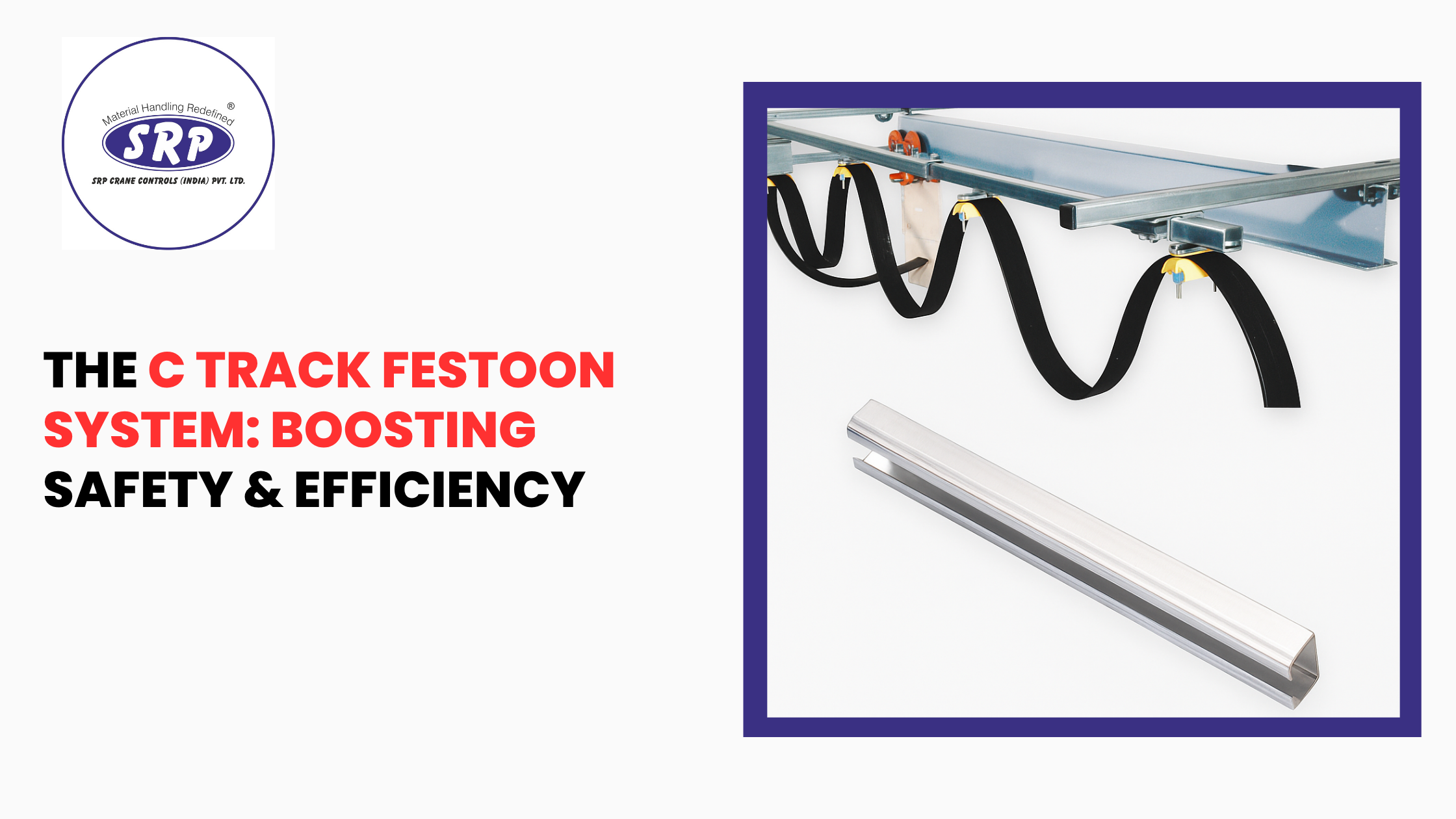Here’s the brutal truth about crane safety: approximately 100 crane-power line contacts occur each year in the U.S., resulting in multiple deaths or life-altering injuries. Yet most facility managers obsess over load ratings and maintenance schedules while treating limit switches like afterthoughts—a mistake that transforms safety devices into liability magnets.
The difference between a catastrophic failure and flawless operation often comes down to three centimeters of actuator travel and microseconds of response time. In the unforgiving physics of industrial lifting, limit switches aren’t just components—they’re the last line of defense between controlled motion and chaos.
SRP Crane Controls understands this reality. As an ISO-certified manufacturer specializing in precision-engineered safety devices, SRP has built its reputation on a simple premise: when failure isn’t an option, quality isn’t negotiable. Their comprehensive ecosystem of controls and safety devices reflects decades of real-world experience in India’s demanding industrial landscape.
The Lever Limit Switch: Mechanical Simplicity Meets Industrial Reality
The lever limit switch operates on elegantly simple mechanics—a physical actuator triggers electrical contacts when displaced beyond preset parameters. This mechanical directness eliminates the failure modes that plague electronic alternatives: no software glitches, no sensor drift, no communication errors.
SRP’s lever limit switches embody this principle with high-grade materials and IP65 protection ratings. With current ratings spanning 20–40 A, these switches handle the electrical demands of heavy-duty crane operations without the contact degradation that plagues lesser alternatives. The engineering focus on minimizing contact bounce and mechanical misalignment reflects SRP’s understanding that industrial environments punish imprecision.
The magic lies in the details: sealed housings that exclude contamination, contact materials optimized for arc suppression, and mounting systems engineered for the vibration and shock loads inherent in crane operations. These aren’t catalogue components—they’re purpose-built solutions for operators who understand that downtime costs more than premium hardware.
Gravity Limit Switch: When Physics Becomes Your Partner
Gravity limit switches represent fail-safe engineering at its most elegant. The counterweight-based mechanism provides inherent safety redundancy—when electrical systems fail, gravity continues working. This passive reliability makes gravity switches indispensable for vertical motion control in heavy-duty hoisting operations.
SRP’s gravity limit switches are designed specifically for the crushing demands of industrial lifting. Under high-load conditions where lesser switches falter, SRP units maintain consistent performance through robust mechanical design and materials selection. Their role in redundant safety logic—providing backup protection when primary systems fail—transforms them from simple switches into critical safety infrastructure.
The counterweight system responds to cable slack instantly, triggering protective shutdown before dangerous conditions develop. In an industry where “almost safe” kills people, this mechanical certainty provides peace of mind that electronic systems simply cannot match.
Rotary Limit Switch: Precision Engineering for High-Speed Operations
Rotary limit switches use gear or cam-based mechanisms to provide precise movement limiting across multiple turns of operation. This gear-reduction approach translates high-speed crane motions into controlled, measurable switch activation—essential for applications requiring exact positioning.
SRP’s rotary switches offer gear ratios from 1:25 to 1:200, housed in IP65 enclosures with high insulation ratings. This range allows precise matching to specific application requirements, whether controlling high-speed trolley movements or managing slow, heavy-load positioning. The superior positioning precision under high-speed operations reflects SRP’s commitment to engineering excellence over cost optimization.
The mechanical advantage provided by gear reduction enables fine-tuned control that direct-acting switches cannot achieve. For operations requiring repeatable positioning within tight tolerances, this precision becomes the difference between efficient operation and costly rework.
Electrical Contact Design: Where Chemistry Meets Engineering
Contact material selection represents the intersection of chemistry and engineering. Silver alloys provide optimal conductivity and arc resistance, while sealed contact chambers exclude moisture and contamination. SRP switches incorporate these proven materials within designs optimized for extended operational life.
Arc suppression becomes critical in high-current applications. The upper limit switch in a hoist is designed to prevent the hook assembly from colliding with the drum. It is a safety device, not an operational device. If the ultimate upper limit switch fails, the hook block and the drum will collide and the wire rope probably will fail, dropping the load. This stark reality underscores why SRP engineers their switches with redundant arc suppression and thermal protection systems.
Built-in thermal protection ensures reliability during high-load operations when contact heating could compromise performance. These thermal management features, combined with sealed, protected contacts, extend operational life far beyond standard industrial switches.
Environmental Armor: Engineering for Real-World Brutality
IP ratings and material resilience determine whether switches survive or succumb to industrial environments. Dust, moisture, vibration, and thermal cycling destroy inadequately protected components with predictable regularity.
SRP limit switches feature ABS and die-cast aluminum bodies specifically tested for thermal and dust resilience. These materials and construction methods reflect engineering decisions made for India’s challenging industrial conditions—tropical humidity, corrosive atmospheres, and temperature extremes that destroy lesser equipment.
The combination of sealed housings, corrosion-resistant materials, and vibration-resistant mounting systems ensures consistent performance in environments where failure equals catastrophe. This isn’t over-engineering—it’s recognizing that industrial reality doesn’t accommodate delicate components.
Integration Intelligence: Beyond Standalone Safety
Modern crane operations demand seamless integration between limit switches and control systems. PLC and VFD integration requires signal filtering and control logic that transforms basic switches into intelligent safety systems.
SRP’s ecosystem approach includes compatible components that work together: pendant push-button stations, C-rail festoon systems, and wireless radio remotes. This systematic integration reduces installation complexity while enhancing overall safety performance. When components are designed to work together from the outset, the result is greater than the sum of individual parts.
The combined system approach eliminates the compatibility issues and signal problems that plague mixed-vendor installations. For operators focused on reliability over cost minimization, this integrated approach provides operational advantages that justify premium investment.
Force Multipliers: The SRP Safety Ecosystem
Supporting products amplify limit switch effectiveness through systematic safety enhancement:
- Pendant Push-Button Systems provide operators with immediate, tactile control over crane operations. SRP’s pendants integrate seamlessly with limit switch safety logic, ensuring that operator commands respect safety boundaries.
- Wireless Radio Remotes extend operator control while maintaining safety integration. The radio systems communicate with limit switches to prevent operator commands that would violate safety parameters.
- C-Rail Festoon Systems ensure reliable power delivery to moving components, including limit switches. Consistent power supply eliminates the intermittent failures that compromise safety system reliability.
- Current Collectors and Cable Trolleys complete the power delivery chain, providing the robust electrical connections necessary for dependable limit switch operation under dynamic loading.
Critical Questions: Engineering Wisdom From the Field
- Why combine rotary and gravity limit switches? Redundant safety systems using different operating principles eliminate single-point failures. When one system relies on electrical actuation and another on mechanical gravity response, simultaneous failure becomes virtually impossible.
- What inspection intervals ensure optimal performance? SRP recommends monthly visual inspections with quarterly operational testing. This frequency catches developing problems before they compromise safety while avoiding excessive maintenance costs.
- How do IP ratings translate to real-world protection? IP65 provides dust-tight protection with water jet resistance—adequate for most industrial environments. Higher ratings may be necessary for wash-down or marine applications.
- Why choose integrated SRP control systems over mixed vendors? Pre-engineered compatibility eliminates troubleshooting headaches while ensuring optimal performance across all system components. The cost savings from reduced installation time and maintenance complexity often exceed any initial price premiums.
The Safety Imperative: Engineering Excellence as Standard Practice
Reliable limit switches represent foundational elements in crane safety architecture. The difference between adequate and exceptional lies in engineering details: contact materials, environmental protection, integration capabilities, and manufacturing precision.
SRP Crane Controls has built its reputation on delivering these details consistently. Their comprehensive approach—safety devices and control systems engineered together—reflects understanding that safety isn’t a component-level concern but a systems-level imperative.
The choice isn’t between cheap and expensive limit switches—it’s between components that work when needed and those that fail when failure costs lives. In an industry where the consequences of malfunction extend far beyond equipment damage, choosing proven reliability over initial cost savings isn’t just good engineering—it’s moral responsibility.
Ready to upgrade your crane safety systems with precision-engineered components? Request a quote or maintenance checklist from SRP Crane Controls and discover how systematic safety engineering transforms industrial operations.




